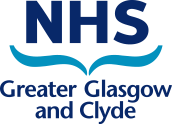SGLT2i in Management of Chronic Kidney Disease
Key Messages
-
Clinical trials of sodium-glucose co-transporter-2 inhibitors (SGLT2i) have demonstrated improvement in kidney and cardiovascular outcomes in patients with chronic kidney disease (CKD) with and without diabetes.
-
SGLT2i trials recruited patients already receiving renin-angiotensin system inhibitors, i.e. angiotensin converting enzyme inhibitor (ACEi) or angiotensin receptor blocker (ARB).
-
Canagliflozin 100mg daily is licensed for diabetic kidney disease (DKD) in patients with type 2 diabetes and can be started where eGFR ≥ 30mL/min/1.73m2. Dapagliflozin 10mg daily is licensed for treatment of CKD in patients with or without diabetes and eGFR ≥ 15mL/min/1.73m2 at initiation. Either drug may be continued to end-stage kidney disease.
-
Dapagliflozin has been accepted by Scottish Medicines Consortium (SMC) for restricted use within NHS Scotland for treatment of adult patients with CKD and eGFR ≥ 25mL/min/1.73m2 to ≤ 75mL/min/1.73m2 at treatment initiation who are receiving an ACEi or ARB (unless not tolerated or contraindicated) and who have a urine albumin creatinine ratio of ≥ 23mg/mmol, or type 2 diabetes mellitus or both. The NHSGGC Adult Medicines Formulary has been updated accordingly.
Overview
Management of CKD comprises treatment of any underlying cause and general supportive care. The latter includes prescription of an ACEi or ARB (but not both), blood pressure (BP) lowering and aggressive management of cardiovascular risk factors. Lifestyle risk factors such as smoking cessation and obesity should also be addressed.
Prescribing Advice and Safety
As the majority of patients in SGLT2i trials were already receiving ACEi or ARB, prior prescription of one of these drugs is recommended. Reassessment of renal function or potassium is not recommended following SGLT2i treatment initiation. Although uncommon, there is a small risk of volume depletion; adjustment of concomitant diuretic doses is not generally required. Sick day rules should be observed, with patients advised to discontinue SGLT2i during intercurrent illness or fasting (including for religious reasons) or perioperatively. Patients should be counselled in advance that the predominant adverse effect of fungal genitourinary infection is generally a minor clinical issue. Those presenting with recurrent urinary tract infection should have their SGLT2i therapy reviewed.
In patients with diabetes, there is a risk of diabetic ketoacidosis, though this risk is low. In patients with eGFR ≥ 45mL/min/1.73m2, despite the modest reduction in HbA1c observed, if diabetic control is already tight, insulin and/or sulphonylurea doses may need to be reduced. Patients performing home blood glucose (BG) monitoring should be advised to increase their frequency. There is no requirement for non-diabetic patients to commence BG monitoring. As patients with polycystic kidney disease, lupus and vasculitis were excluded from the DAPA-CKD clinical trial, SGLT2i should be used with caution in these patients and under renal clinic supervision.
Outcome Trials
Clinical trials of SGLT2i have found significantly improved kidney outcomes in patients with type 2 diabetes, despite relatively modest reductions in HbA1c. In the CREDENCE study, canagliflozin 100mg daily significantly reduced the risk of first occurrence of the primary composite endpoint of end stage kidney disease, doubling of serum creatinine and renal or cardiovascular death, relative to placebo. DAPA-CKD investigated the addition of dapagliflozin 10mg daily to standard of care therapy. One third of the study population were non-diabetic. Dapagliflozin was superior to placebo in reducing the primary composite endpoint of worsening kidney function (≥ 50% sustained decline in eGFR or onset of end-stage kidney disease) or death due to kidney or cardiovascular disease, in both diabetic and non-diabetic patients.
Renal Benefit
A remarkably similar effect size was observed in the trials of each drug within the SGLT2i class. In DAPA-CKD, the number needed to treat to prevent one renal outcome over a median of 2.4 years was 19. This extraordinary effect size is larger than that associated with prescription of ACEi or ARB, or BP control; these of course remain important aspects of CKD care. Although there is an expected reduction in eGFR of around 4mL/min/1.73m2 after commencing SGLT2i, this is a reversible effect, more than compensated for by longer term benefit in renal function. Early reduction in albuminuria by approximately 30% has also been demonstrated; a proven prognostic marker for improved renal outcomes.
Conclusions
SGLT2i reduce the risk of major kidney deterioration by up to 44% in patients with CKD. They are now standard of care for supportive management of CKD, in addition to ACEi or ARB. There is experience with canagliflozin for the treatment of DKD, both with and without albuminuria. The canagliflozin Summary of Product Characteristics (SmPC) includes information on its use in DKD as add on to standard of care. This is not noted as a new indication and can therefore be prescribed within NHSGGC, as it does not require SMC approval. The CKD indication for dapagliflozin is new and has recently been accepted for restricted use by SMC. The NHSGGC Adult Medicines Formulary has been updated following this SMC advice.
As this is an evolving therapeutic area, please refer to the canagliflozin and dapagliflozin SmPCs respectively for full prescribing information:
Originally published 11/02/2022, updated 09/09/2022. Medicines Update blogs are correct at the time of publishing
